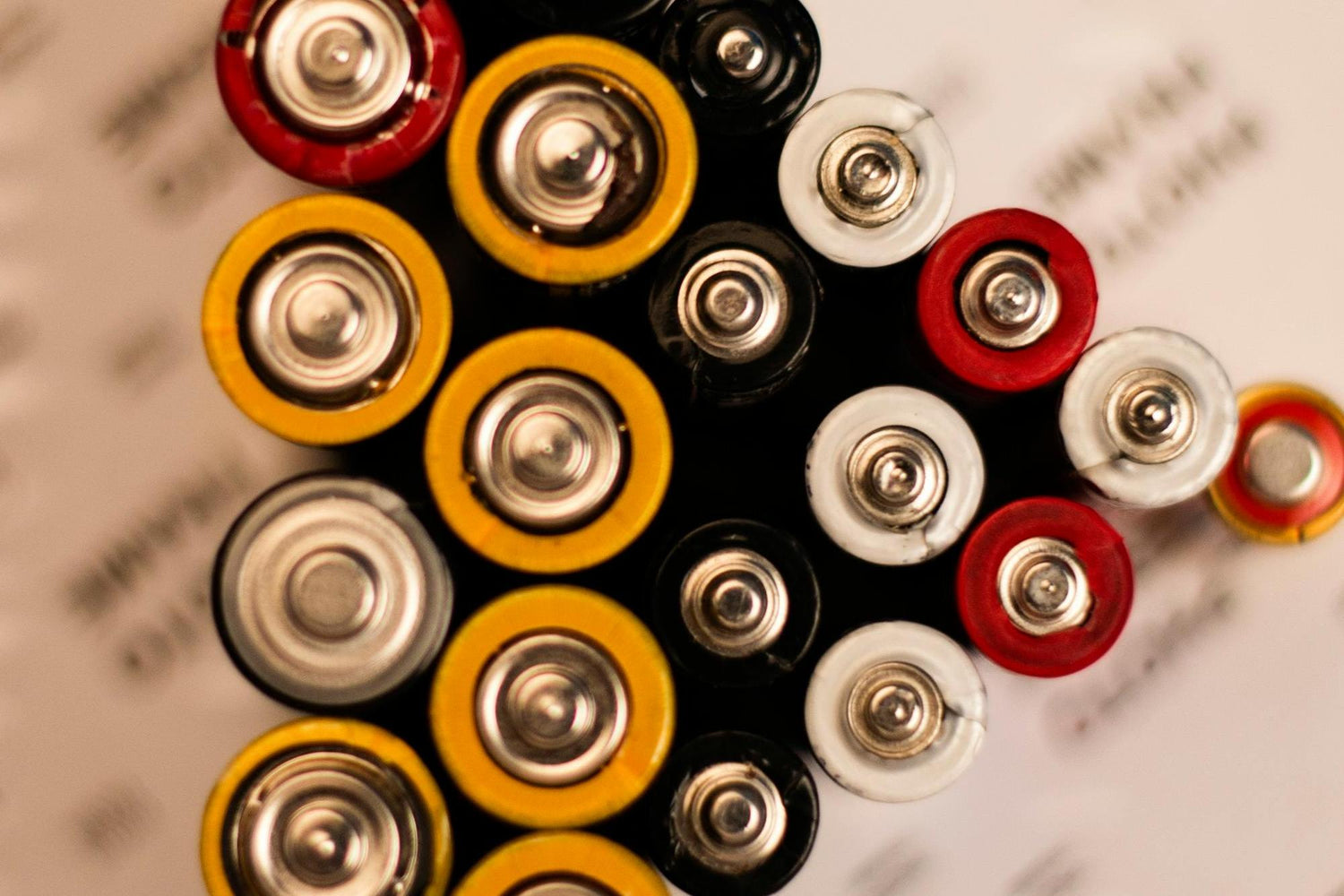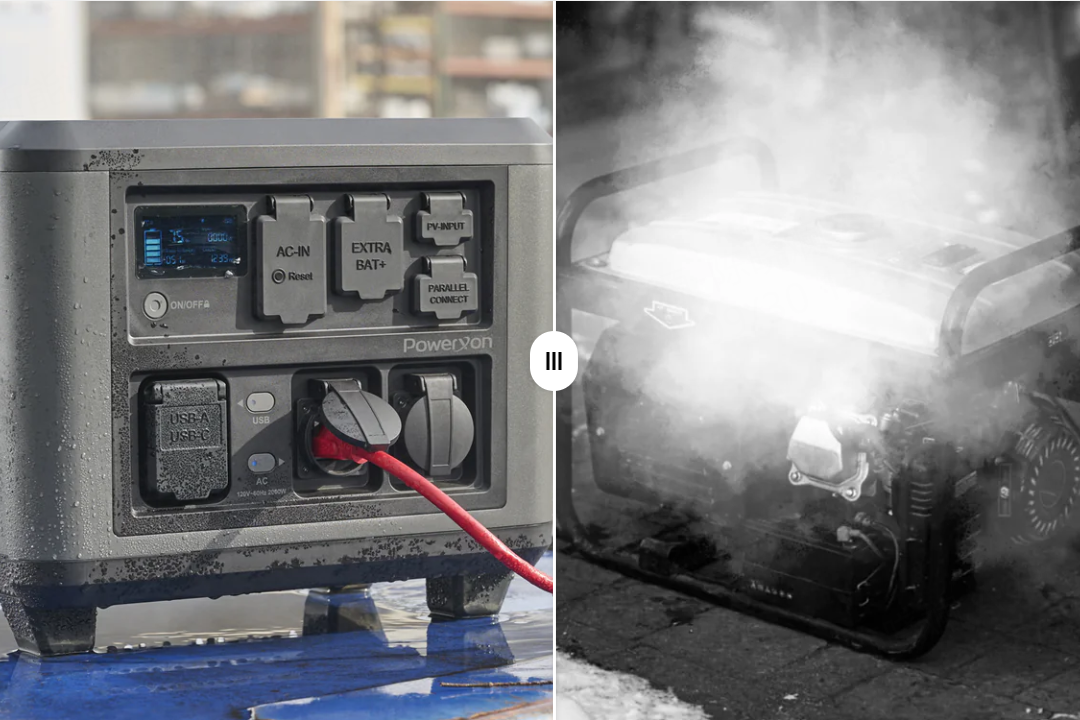In today’s world, portable power stations are becoming an essential tool for outdoor enthusiasts, emergency preparedness, and even remote workers. But as important as the power station itself is, the type of battery powering it plays a crucial role in its performance, safety, and longevity.
Two of the most popular battery types used in portable power stations are Lithium-Ion (Li-ion) and lithium-iron phosphate (LiFePO4). Both have their strengths, but understanding the differences between them can help you make an informed decision when choosing a power station for your needs.
In this post, we’ll explore the key differences between LiFePO4 and lithium-ion batteries, comparing their performance, safety, lifespan, environmental impact, and more to determine which is the better choice for portable power stations.
What are Lithium-Ion Batteries?
Lithium-ion batteries have been around for decades, powering everything from smartphones and laptops to electric vehicles. Their high energy density and relatively lightweight design have made them a popular choice for consumer electronics, as they can store a large amount of energy in a compact form.

Advantages of Lithium-Ion Batteries:
1. High Energy Density:
Lithium-ion batteries offer a high energy density, meaning they can pack a lot of power into a small size. This makes them ideal for portable devices where space and weight are at a premium, such as in laptops, smartphones, and electric cars. Their compact design allows manufacturers to create smaller, lighter products while still offering long battery life.
2. Fast Charging:
Another major advantage of lithium-ion batteries is their ability to charge quickly. This can be especially useful in situations where fast turnaround times are critical, like when you need your portable power station to recharge during a brief layover or while you’re in between activities during a camping trip.
3. Widely Available and Familiar:
Lithium-ion technology is widespread, and consumers are generally familiar with how these batteries perform. As a well-established technology, there is a large infrastructure around manufacturing and recycling lithium-ion batteries.
Drawbacks of Lithium-Ion Batteries:
1. Thermal Runaway Risk:
One of the biggest concerns with lithium-ion batteries is the risk of overheating, which can lead to a dangerous condition known as "thermal runaway." In extreme cases, this can result in fires or explosions, especially if the battery is punctured, exposed to extreme heat, or improperly charged. Although rare, this risk makes lithium-ion batteries less ideal for applications where safety is paramount.
2. Shorter Lifespan:
Lithium-ion batteries tend to degrade over time, losing capacity with each charge cycle. On average, a lithium-ion battery may last for 500 to 1,000 charge cycles before its performance significantly diminishes. For users who rely on their portable power station regularly, this can mean more frequent battery replacements, increasing both cost and environmental impact.
3. Environmental Impact:
The production of lithium-ion batteries often involves mining materials like cobalt, nickel, and lithium, which can have significant environmental and ethical implications. Cobalt, in particular, has been linked to unethical mining practices, including child labor in certain regions.

What are LiFePO4 (Lithium Iron Phosphate) Batteries?
LiFePO4, or lithium iron phosphate, is a newer and increasingly popular battery technology, particularly in the energy storage and renewable energy markets. This type of battery is known for its exceptional safety, durability, and long life, making it ideal for applications like portable power stations, solar energy systems, and electric vehicles.
Advantages of LiFePO4 Batteries:
1. Exceptional Safety:
One of the standout features of LiFePO4 batteries is their safety. Unlike lithium-ion batteries, LiFePO4 batteries are highly stable and resistant to overheating, even under high temperatures or stress. This makes them significantly less likely to catch fire or explode, providing peace of mind when using a portable power station in unpredictable environments or during extended trips.
2. Longer Lifespan:
LiFePO4 batteries are designed to last. On average, they offer up to 3,500 to 5,000 charge cycles—several times more than a standard lithium-ion battery. This means you can use your portable power station daily for years without seeing a significant drop in performance. For anyone looking to make a long-term investment in their power solution, LiFePO4 offers excellent value.
3. Durability and Performance in Extreme Conditions:
Whether you’re hiking through the desert or camping in freezing temperatures, LiFePO4 batteries can handle extreme weather conditions without losing performance. They are highly resistant to temperature variations and can operate safely in environments ranging from -20°C to 60°C (-4°F to 140°F). This durability makes them a reliable option for outdoor adventurers and emergency backup power during storms or natural disasters.
4. Sustainable and Eco-Friendly:
LiFePO4 batteries are more environmentally friendly than their lithium-ion counterparts. They do not contain harmful materials like cobalt or nickel, reducing the environmental and ethical concerns associated with mining these elements. Additionally, their long lifespan means fewer batteries end up in landfills over time, contributing to a lower overall environmental footprint.
5. Stable Power Output:
One of the key performance advantages of LiFePO4 batteries is their consistent power output. Unlike lithium-ion batteries, which may experience voltage drops as they deplete, LiFePO4 batteries maintain a steady voltage throughout the majority of their charge cycle. This means your devices and appliances will run smoothly and consistently until the battery is nearly drained.

Drawbacks of LiFePO4 Batteries:
1. Lower Energy Density:
LiFePO4 batteries tend to be bulkier and heavier than lithium-ion batteries with the same energy capacity. While this might not be an issue for larger portable power stations, it can be a consideration for users who prioritize compact, lightweight designs for travel.
2. Slower Charging Speeds:
While LiFePO4 batteries are more durable and safer, they typically charge more slowly than lithium-ion batteries. This may be a concern for users who need quick turnaround times for recharging their portable power stations between uses. However, many LiFePO4 batteries, including those in PowerXon’s portable power stations, are optimized to balance safety and charging speed.
LiFePO4 vs Lithium-Ion: A Side-by-Side Comparison
|
Feature |
LiFePO4 (Lithium Iron Phosphate) |
Lithium-Ion |
|
Safety |
Extremely safe, no thermal runaway risk |
Risk of overheating and fire |
|
Lifespan |
3,500–5,000 cycles |
500–1,000 cycles |
|
Energy Density |
Lower, heavier, and bulkier |
Higher, more compact |
|
Charge Time |
Slower charging speed |
Faster charging |
|
Operating Temperature |
Wide range, extreme temperature resistance |
Limited temperature tolerance |
|
Environmental Impact |
More eco-friendly, no cobalt |
Involves cobalt and other harmful elements |
|
Cost |
Higher initial cost, but better long-term value |
Lower initial cost, but shorter lifespan |
Why PowerXon Chooses LiFePO4 for Its Portable Power Stations
At PowerXon, we prioritize safety, reliability, and longevity in our products, which is why we’ve chosen to power our portable power stations with LiFePO4 batteries. Here’s why:
1. Safety Above All: Our portable power stations are designed for a wide range of applications, from outdoor adventures to emergency backups during power outages. Safety is a non-negotiable feature. With LiFePO4 batteries, we eliminate the risk of thermal runaway, making our power stations safe for both everyday use and unpredictable situations.
2. Long-Term Value: LiFePO4 batteries may come with a higher upfront cost, but their extended lifespan makes them a better investment in the long run. Whether you use your portable power station regularly for off-grid living or as a backup power source, LiFePO4’s longevity ensures you’ll get years of reliable performance without the need for frequent battery replacements.
3. Durability for Outdoor Use: Our customers rely on PowerXon power stations to keep their devices running in harsh environments, from camping trips to remote workstations. The rugged durability of LiFePO4 batteries, combined with their ability to withstand extreme temperatures, ensures that your power station will perform consistently no matter where you are.
4. Sustainable Energy Choices: We understand the growing demand for environmentally responsible products. LiFePO4 batteries, with their reduced environmental impact and longer lifespan, align with our commitment to sustainability.

Conclusion: LiFePO4 is the Best Choice for Portable Power Stations
While lithium-ion batteries have their place in consumer electronics, when it comes to portable power stations, LiFePO4 is the superior choice. Its unmatched safety, longer lifespan, and ability to perform in tough conditions make it ideal for outdoor enthusiasts, emergency preparedness, and anyone looking for a reliable, long-lasting power source.
At PowerXon, we’ve embraced LiFePO4 technology to deliver portable power stations that you can depend on for years to come. Whether you’re planning your next camping trip or preparing for a power.


